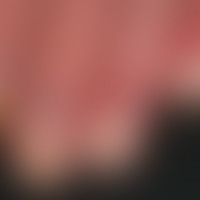Image diagnoses for "Finger"
108 results with 251 images
Results forFinger

Adult dermatomyositis M33.1
Dermatomyositis. Gottron papules in a 72-year-old woman. Smaller, striated, reddish-livid papules appear, which confluent in the region of the end phalanges to form flat plaques. Strongly pronounced nail fold capillaries on dig. III and V. The Keining sign was strongly positive in the clinical examination.

Adult dermatomyositis M33.1
dermatomyositis: reflected light microscopy. hyperkeratotic nail folds. pathologically increased and enlarged torqued capillaries. older bleeding into the nail fold.
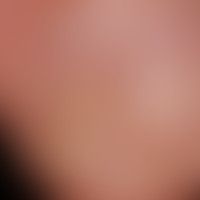
Glomus tumor D18.01
Glomus tumor. solitary, painful defect formation of the nail, accompanied by stabbing pain that occasionally radiated into the upper arm.
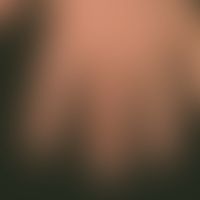
Granuloma annulare subcutaneum L92.0
Granuloma anulare subcutaneum. multiple chronically stationary, firm, symptomless, subcutaneously located nodes. persistent for several years. resistant to therapy.
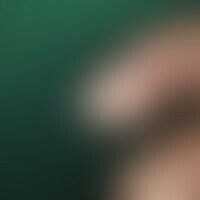
Calcinosis dystrophica localized L94.21
Calcinosis dystrophica with circumscribed whitish concrement deposits in systemic scleroderma.
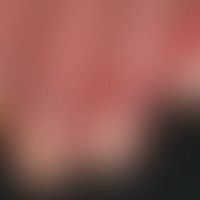
Lupus erythematosus (overview) L93.-
Lupus erythematosus so-called chilbalin lupus: recurrent course for years; bluish-livid, painful plaques reminiscent of frostbite (chilblain).

Keratosis palmoplantaris diffusa with mutation in keratin 1 Q82.8
Keratosis extremitatum hereditaria transgrediens et progrediens

Interdigital candidiasis B32.7
Erosio interdigitalis candidamycetica: extensive erosion after maceration of the interdigital interdigital skin, with typical whitish macerated, raised edges.

Fingertip necrosis I77.8
Fingertip necrosis:sudden, painful necrosis of digitus II in a 51-year-old female patient with Z.n. malignant melanoma, swelling and reddening of the distal skin of the finger after the start of therapy with hydroxycarbamide infusions.

Graft-versus-host disease chronic L99.2-
Graft-versus-Host-Disease, chronic. 2 years after stem cell transplantation, large-area scleroderma and poikiloderma skin changes. here detail picture with massive acrosclerosis. scarring of the fingertips after healed fingertip necrosis.

Fingertip necrosis I77.8
Healed fingertip necroses in chronic " Graft-versus-Host-Disease": 2 years afterstem cell transplantation, large-area scleroderma and poikiloderma skin changes. Massive acrosclerosis. Scarring on the fingertips after healed fingertip necroses.

Granuloma anulare (overview) L92.-
Granuloma anulare subcutaneous type Multiple, painless, deep cutaneous, skin-coloured nodules on the sides of the fingers (Granuloma anulare subcutaneum).

Granuloma anulare (overview) L92.-
Granuloma anulare giganteum: Centripedally growing, painless, sharply defined, edge-emphasized, red red-brown plaque that has been present for years. Circinal outline

Granuloma anulare (overview) L92.-
Granuloma anulare, classic type . borderline, in the centre skin-coloured, smooth, painless, firm papules and plaques with the formation of an indicated ring shape without scaling over the middle joint of the left middle finger.
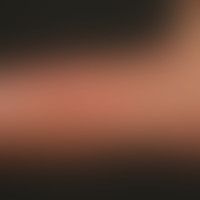
Hand-foot-mouth disease B08.4
Hand-foot-mouth disease: Healed blisters in an expired disease with typical symptoms.

Hand-foot-mouth disease B08.4
Healed blisters in an expired disease with typical symptoms, now circulatory desquamation.

Old world cutaneous leishmaniasis B55.1
Leishmaniasis, cutaneous, several weeks after a stay of several days in Lebanon, moderately sharply defined, roundish, red lump with central ulcer formation (here crust-covered).
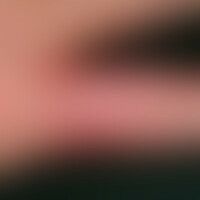
Nontuberculous Mycobacterioses (overview) A31.9
Mycobacteriosis atypical: chronic, red, in the center verrucous, otherwise surface smooth, blurred, painless plaque. aquarium owner.

Swimming pool granuloma A31.1
Mycobacterioses, atypical. 3 months old, developing from a red papule, firm, covered with whitish scales, free of scales at the edges, reddish-brown, completely painless nodule. culturally proven infection by M. marinum.

Tinea pedis moccasin type B35.30
Tinea pedis "moccasin type": A little inflammatory only moderately sharply delimited scaly mycosis of the foot.

Ringworm B35.2
Tinea manuum, impetiginierte: plaque on the back of the hand and forefinger that has existed for several months, accentuated at the edges, coarse lamellar scaling on the back of the hand and forefinger.moderate itching. increased weeping scaling in recent weeks. cultural evidence of Trichophyton rubrum.

Ringworm B35.2
Tinea manuum. coarse lamellar scaling in the area of the palm and the sides of the fingers without significant erythema.
